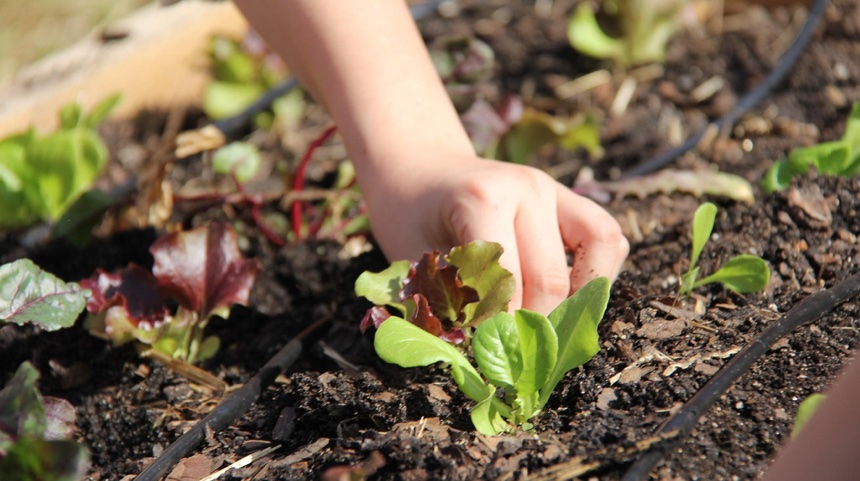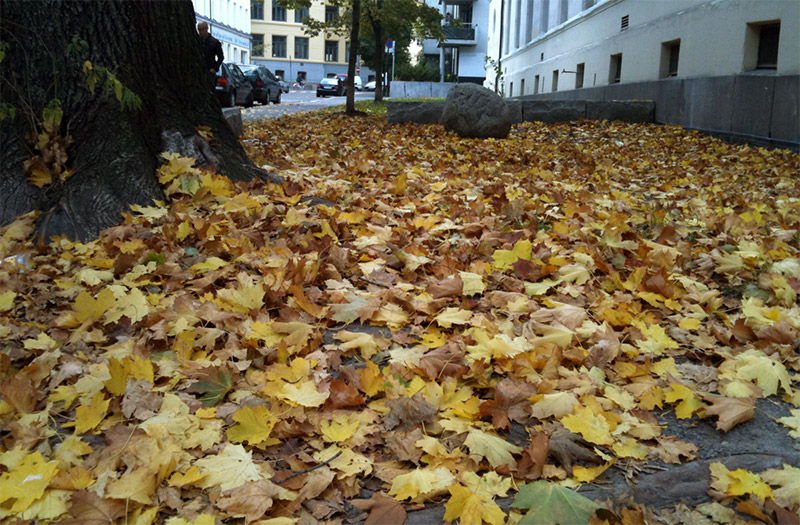An important step towards integrating in Norway is understanding and participating in neighbourhood volunteer days.
If I were challenged to describe Norwegian culture and society in a few words dugnad would definitely be one of the words thrown in to the mix.

Dugnad is one of those concept type words. You know the ones that cannot be defined by a few sentences on paper because they embody so much more than that. They are words with cultural resonance that represent a way of life or an expectation, which is not easy to translate.
What is a dugnad I hear you say? Well it is what I can best describe as a type of community volunteer day where people get together and fix, clean, paint or tidy things up. It is usually based outdoors involving some sort of manual labour.
If you live in Norway and live in a flat or house with communal areas I am pretty certain you will have already heard this term or even participated.
Changing of the seasons
Dugnads happen around the change of seasons – in autumn to prepare for winter and in spring to prepare for summer (and for the 17 May celebrations).

They are arranged in neighbourhoods, blocks of flats, at summer homes, marinas, mountain cabins even at schools and places of work. The dugnad knows no bounds! It can be summed up as a time of coming together and contributing to the community that you are a part of. Most of us belong to several communities or groups so it is possible that your presence is required at multiple dugnads per year.
I live in a group of apartments with shared gardens and a car park and twice a year there is a dugnad. Everyone shows up and helps out with a few of the tasks that the Board of the complex has decided need to be done this time round like trimming bushes, weeding or gathering leaves. Once I even painted the tool shed. I took such pride in those mustard yellow walls.
I learnt about the dugnad quite early on in my Norwegian indoctrination. It was during my Norwegian language course in the beloved “På Vei” text book. The story was about a family who were new to Norway. They had recently moved to a block of flats and were invited to come along to the dugnad.
The moral of the story was that dugnads are important and everyone participates. This, I can tell you, is true to the experience I have had so far.
The Norwegian community contract
In Aftenposten this weekend, I read an article by Hadia Tajik (the deputy leader of the Norwegian Labour Party) about the hot topic of immigration to Norway and she sums up the “Norwegian community contract” as: first do your duty then claim your rights, in that order. The dugnad embodies the first part: duty.
For those of you that are reading this and thinking – you have got to be kidding me – I assure you the dugnad is no joke. There really is no escaping so my advice is to embrace the dugnad.
If you are not a fan of manual labour there just might be another incentive to join in as typically the activity culminates in a barbecue or some sort of refreshments: hot dogs and waffles and coffee or occasionally the odd beer or two.
Photo credit: UGA College of Ag & Environmental Sciences


Hi,
It’s a very interesting article, what city are you in?
I am going to Norway in a few days, will be arriving at Oslo first, and would like to network with people.
Thanks
DeMor Cai
Ive lived in Norway all my life and I can honestly say Ive never seen or heard of anyone joining up for a dugnad. I find that foreigners tend to generalize a lot when it comes to certain things about Norway – the dugnad thing being one of them (alongside our climate, lol).
Sadly, people here arent very interested in helping each other anymore, the dugnad spirit is a thing of the past Heck, alot of us nowadays dont even know our next door neighbours name…
I agree with Eleni on this one! I’ve lived in three different developments across Oslo and Trondheim and all of them held a dugnad twice a year, and the majority of residents participated. Do you live in a detached house rather than an apartment block or shared community? If you live in a detached house then of course there won’t be a dugnad… then it’s just called housework 🙂
The dugnad has definitely been one of the things that has stood out for me since being here. I guess sometimes when you come in from the “outside” there are different things that make an impression on you. I can imagine that you are right in terms of there being less of a culture for it then there once was but where I live (Nordberg) it is definitely a thing. And I can testify that Norwegian courses for foreigners introduce the dugnad as part of the lessons too.
If you have lived in Norway and NEVER have been to a dugnad- you are either lying or very unpopular. Almost all volunteer work is done in a dugnad!
My mother’s apartment flats in Oslo, Norway seasonally arranged dugnad to do exactly what the article indicates, clean and maintain communal area in their apartment complex. This happened for as many years that she lived there, which was around 40 years, until she passed.
I was born and raised in Norway, now living in overseas.
Get a kid. You will find dugnad in kindergarten and school. ✌🏻
Hi,
I am born Norwegian, but have been working in and out of Norway for the last 10 years or so, and I have to agree with both of your here. Things have changed a lot in Norway and many people have lost the „Dugnad” spirit. However, I deal with people that are moving to Norway to start working and I hold lots of different lectures for these people depending on what kind of work they will be doing in Norway and what country they are from. One of the most interesting courses that I do is the culture courses for foreign works. And we always have a talk about dugnad. As most people that have been to Norway have been asked to come to one or have heard of them.
The way foreigners look at the word dugnad depends a lot on where they come from. If you are talking to an English person, you can say it is like voluntary work for the local community or for the up keep of the building that you are living in.
English people seem to be willing to go along with this, but if you say this to a Polish person they will never go on this, so you need to explain it in a different way. For them, with the history they have they think of “dugnad” as the same things they had to do under communism times, when they had to go and work for free and was told that it was for the good of the local community.
There are a few interesting words and cultural differences between Norwegians and other people in Europe. With the job I do I see many of these very often:)
I agree with you, every culture need a different explanation, but dugnad is a milestone in my knowledge of norwegian people and culture.
I’m italian, so I explain dugnad as friends and family gathering together for help, because in our culture those are stronger bonds than local community and you don’t expect that someone come and help without being your friend.
Great explanation! I think I will use that next time.
thanks for your comment. I totally see your point.
I just moved to Norway in July, and I have already been to over 4 dugnads.
In the US it is known as a type of volunteer community service. Many Christian churches inculcate the idea of giving a specific amount of time or money. In the secural arena there is the idea of giving Five– and that could mean five hours per whatever or money.
The difference is here some people volunteer all the time and do more than their share and most don’t do any volunteering at all. But because it’s not limited to a geographic area, we don’t know who is active and who isn’t.
My reading in Anthropology leads me to believe that during the long period prior to the Neolithic
Revolution a concordance developed between human biology and their hunter-gatherer way of life. In fact, anthropologist Alan Barnard recently wrote that humans became “designed” for a hunter-gatherer way of life. That means that life has become increasingly unnatural for those of us who are inmates of “civilized” societies; it’s understandable, then, why so many problems have been associated with “civilized” existence! What dugnad seems to represent is human nature coming to the fore for a time, at least. In a sense, then, the practice of dugnad can be thought of as as a partial “return” to the way of life for which we had become “designed”! What’s unfortunate is that that practice is not widespread enough to prevent our species to join the 1,000,000 other species likely to go extinct soon!
I’ve been told that my great-great-grandfather, Torje Tjøstolvsen Songe-Solberg, in coming over, from the Tvedestrand area, to Mt. Morris, Wisconsin around 1850, paid for the passage of about 30 people in addition to the members of his family. Would this represent an example of “dugnad,” Eleni?